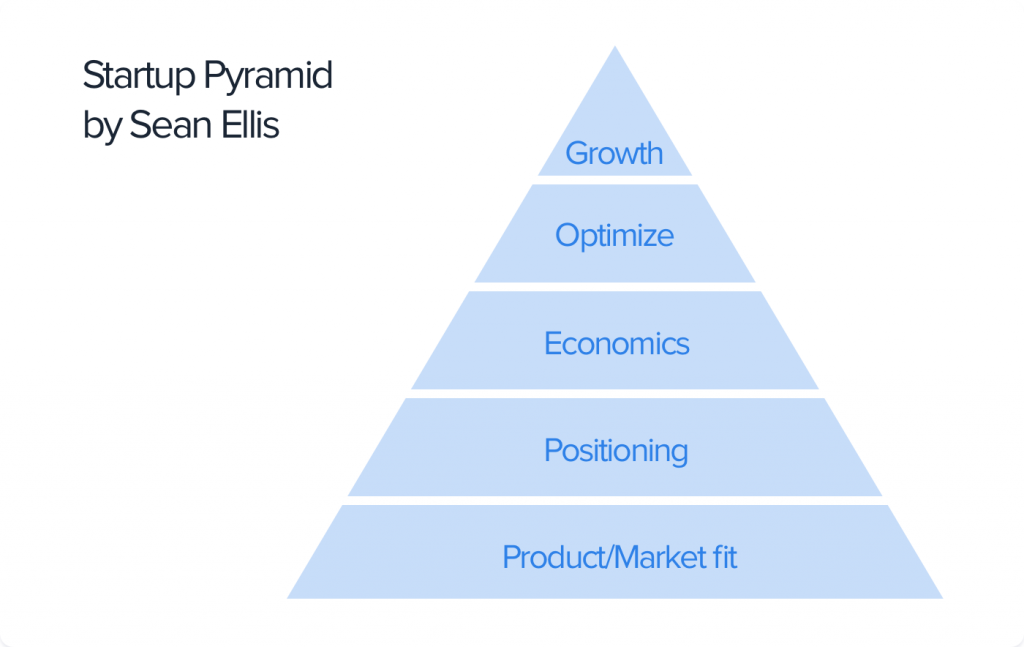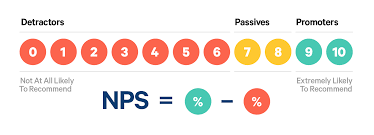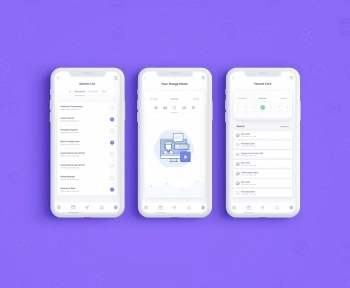Unlike popular belief, growth marketing is not a hack or a one-time action that will take your product usage from 10 users to 1 million users. Growth is an iterative process. It differs for each business but the framework and process are the same.
Product-market fit is a core process every product must go through before achieving growth
If you don’t have a product-market fit then there is no need to hire a growth hacker. If you don’t have a great product then there is no point executing well on growing the product because it won’t grow — Alex Schultz (Ex. head of Growth, Facebook/CMO Facebook)
No product was built with the assumption that this is going to be a “bad” product that people won’t use. Every founder actually has the perfect idea of what they think their target market needs. It can be from educated guesses, customer surveys, competitors’ products, expert opinions etc.
But as a founder or marketer, you start to realise fast, especially after launch, that it’s not always white and black. It is one thing to build a product that you think your target market will like and it’s another to build a product they like.
The best product is not a product with a ton of amazing features but a product that customers love.
Product market fit was coined by Marc Andreesen in 2007, with his post titled “the only thing that matter”. He defined Product/market fit as being in a good market with a product that can satisfy that market. Which basically means building a product that your users love.
According to Marc Andreessen, it is impossible for an initiative to be successful unless it complies with product/market fit. Thus, it is not only a necessity for your idea to be in harmony with the market, but it is also a must. No matter how good or farsighted your idea is, it will not be sustainable if it does not fit the market. — source: Picano
That’s why, unlike popular belief, a startup should focus on retention at its early stage, not acquisition.
Get your early set of customers into the product and monitor their retention level (different types of retention by Brain Balfour — Week 1 retention/early stage, mid-term retention, long-term retention, resurrection).
Relating this to the 1000 true fan concept, if you can get 1000 users to love your product and become evangelists for your product then the odds of getting 1 million users to stay and become brand ambassadors is very high.
How to measure PMF
One thing to note is PMF is a continuous process, it’s not a one-time thing. Most companies fail to adapt their product based on customers’ changes and end up being extinct — look at Myspace.
According to Brain Balfour, they are 4 ways to validate or measure PMF in any company.
- The Leading Indicator Survey
- Leading Indicator Engagement Data
- The Retention Curve
- The Trifecta
The Leading Indicator Surveys:
These surveys indicate what your customer will do. 2 major surveys to test for PMF
A. Product/Market Fit Survey:
Sean Ellis, who coined growth hacker, developed a survey for startups to see if they have achieved product-market fit or not. It’s simple as sending out a survey to your current customer and asking them some survey questions
“How would you feel if you could no longer use [product]?” The measure of success is if 40% or more respond “Very Disappointed.”
According to Sean, If the ratio of the answer “very disappointed” is more than 40%, then that means you indicate product/market fit.

According to Sean Ellis, people who will take the test should have certain qualifications:
- People who experienced the core product or the service
- People who have experienced the product or the service at least twice.
- People who have experienced the product or the service in the last two weeks.
This will provide you with the right target group to do the test.

B. Net Promoter Score (NPS):
NPS is a metric used in customer experience programs. NPS measures the loyalty of customers to a company.
How likely is it that you would recommend [Organization X/Product Y/Service Z] to a friend or colleague?

- Promoters respond with a score of 9 or 10 and are typically loyal and enthusiastic customers.
- Passives respond with a score of 7 or 8. They are satisfied with your service but not happy enough to be considered promoters.
- Detractors respond with a score of 0 to 6. These are unhappy customers who are unlikely to buy from you again, and may even discourage others from buying from you.
NPS is calculated by subtracting the percentage total of Detractors from the percentage total of Promoters.
Leading Indicator Engagement Data:
While the leading indicator survey looks at what your customers will likely do, the leading engagement data looks at what your customers are actually doing with your product.
It’s not enough to get only the survey, you need to make sure the engagement also correlates with your survey.
The engagement data looks at Events, and actions taken by users in your product.
The focus is on active usage, not views or impressions.
The Retention Curve
Look at your retention data. A good and catchy marketing campaign can bring in acquisition but your retention numbers will tell you if customers are actually getting value from your product or have reached the AHA moment of your product or not.

You can get this curve by looking at your active usage separated into cohorts alongside time duration (which can be daily, weekly, monthly or yearly depending on your business model). If the survey is going straight down then that means your retention level is bad, which is an indication that you don’t have PMF.
A high retention rate indicates that customers love and use your product. It affects your average LTV, which directly affects your overall acquisition circle (virality, word of mouth, high acquisition budget)
The Trifecta:
According to Brian Balfour, the trifecta has to do with these 3 core aspects
- Non-Trivial Top Line Growth(increase acquisition)
- Retention (>50% active usage)
- Meaningful Usage (The users taking meaningful action in your product)
Finding Product-Market Fit
Don’t go into the market coming with the perfect product but be iterative. Focus on your customers, talk to your current and potential users and look at your data.
Keep iterating till your users reach the AHA moment, and are continuously hooked to your product.
This post is to debunk the mindset most startup founders have of building an “awesome” product with a lot of features. And to instil the mindset of building a product that customers will love, use and share with others. That is the bedrock of building a thriving product.
Finding product-market fit = Focusing on the market first
Achieving PMF is not a once-off project….It’s a RINSE AND REPEAT PROCESS.
Quick Recap
- Build for Users
- Product Market Fit is a continuous process
- Remove features and look for benefit
- Retention is a core metric for early-stage startups
- Get it right with the first 100 or 1000 and you will most likely get it right with the 100 million customers
- Building an awesome product is all about thinking about the power users. optimizing for people who use your product the most
- Finding product-market fit = focusing on the market first
Don’t forget to share and ask questions.



